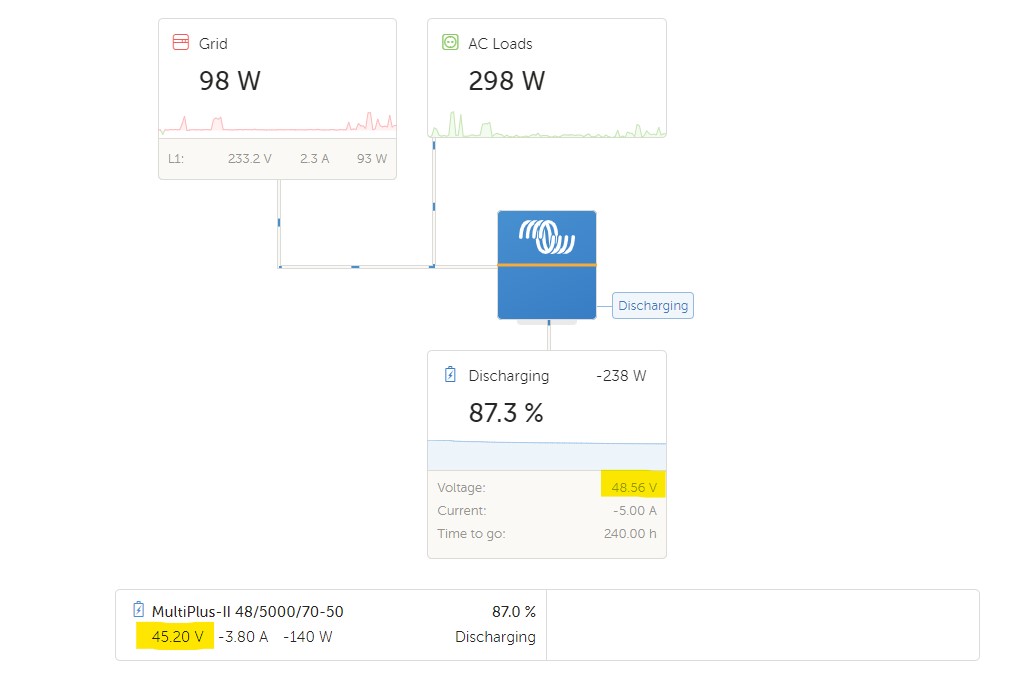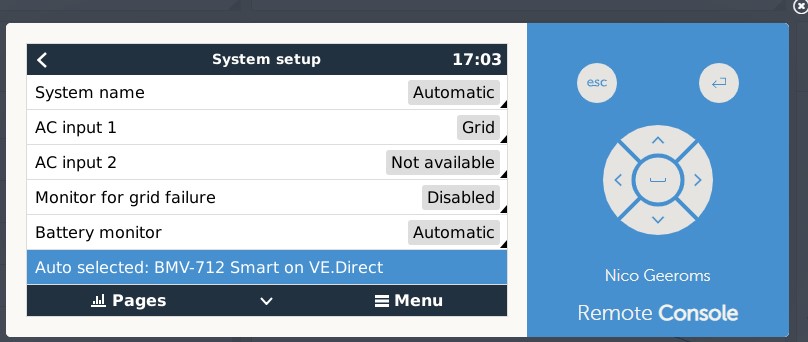It seems like the voltage measured by the BMV-712 and Multiplus-II are different:
- When discharging, the BMV-712 reports a higher voltage than the Multiplus.
- When charging, the BMV-712 reports a lower voltage than the Multiplus
This also results in the Multiplus-II (VE.Bus System) cutting power too early, as it thinks the SoC is dropping below 50%, while the BMV-712 is reporting a higher voltage and a SoC which seems to map on the Ah consumed vs the capacity of the battery bank.
The battery bank is a Landport AGM (16 x 260 Ah, configured as 4s4p. So +- 1000Ah 48V battery bank).
See screenshot for an example of such voltage discrepancy.

The system is configured to use the BMV-712 as battery monitor (see screenshot below). Which doesn't seem to have any impact on the MultiPlus-II detecting low SoC and cutting power.

Any advice?
